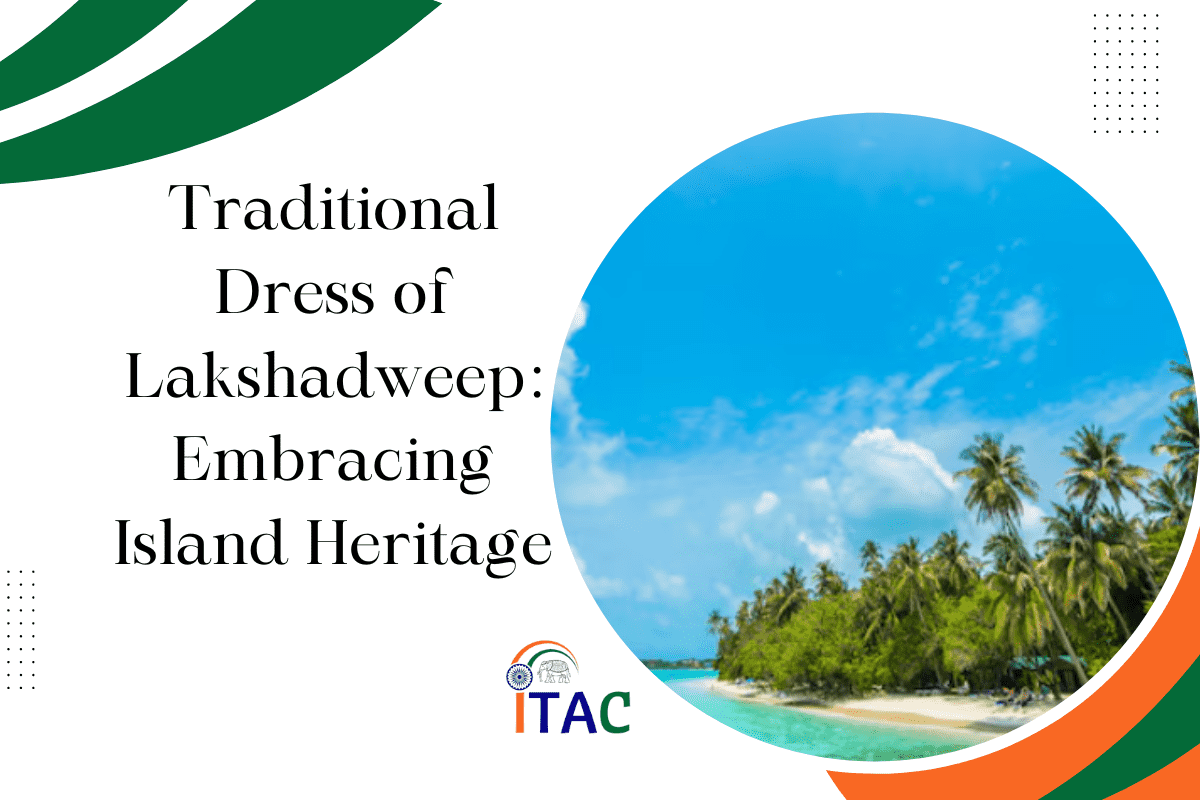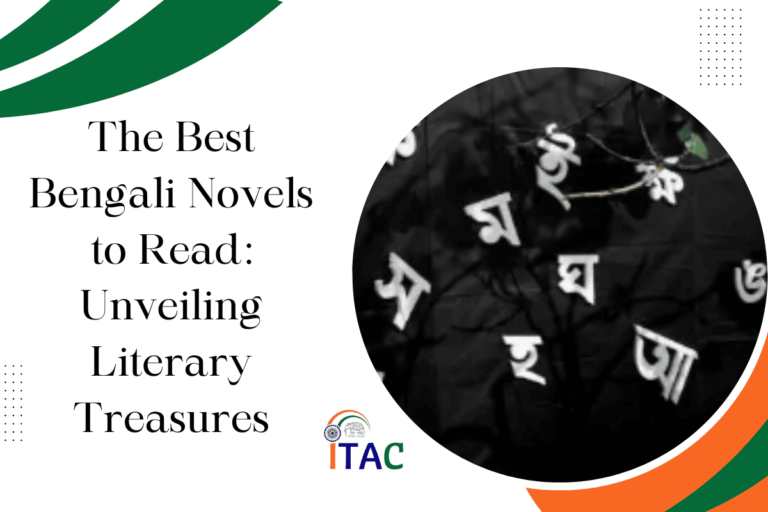Lakshadweep, an archipelago of 36 islands located in the Arabian Sea off the coast of Kerala, India, is not only known for its stunning landscapes and rich marine life but also for its vibrant cultural heritage. Among the most notable aspects of this heritage is the traditional dress of Lakshadweep, which is a reflection of the island’s history, geography, and the lifestyle of its people.
In this blog, we will delve into the traditional attire of Lakshadweep, exploring the nuances of its styles, materials, and cultural significance.
Table of Contents
The Influence of Geography and Climate
The traditional dress of Lakshadweep is greatly influenced by the island’s tropical climate and geographic isolation. Let’s understand this in detail:
- Tropical Climate Adaptation: The traditional attire of Lakshadweep is specifically designed to cater to the tropical climate of the region. This climate is characterized by high temperatures and humidity levels throughout the year, necessitating the need for clothing that helps manage heat and provides comfort.
- Light and Breathable Fabrics: To counter the warm and humid weather, the traditional dress is made from light and breathable fabrics. Cotton is predominantly used due to its ability to absorb sweat and allow air circulation, thus keeping the body cool.
- Geographic Isolation: Lakshadweep’s geographic isolation has played a significant role in the evolution of its traditional dress. The islands’ remoteness has led to the development of a distinct style that is not heavily influenced by mainland trends. This isolation has helped preserve the uniqueness of the local attire.
- Functional Design: The design of the traditional dress is highly functional, catering to the daily activities and lifestyle of the islanders. The attire allows for ease of movement, which is essential for navigating the islands’ terrain and engaging in activities such as fishing, which is a common occupation.
- Cultural Significance: The geography and climate have not only influenced the practical aspects of the traditional dress but also its cultural significance. The attire reflects the islanders’ relationship with their environment, showcasing patterns and designs inspired by the natural beauty of Lakshadweep.
- Adaptation over Time: Over time, the traditional dress has adapted to the changing climate conditions and the availability of materials. While maintaining its original essence, there have been adjustments to ensure that the attire remains relevant and comfortable for the islanders.
- Preservation of Heritage: The continued use of traditional dress in Lakshadweep is a testament to the islanders’ efforts to preserve their cultural heritage. Despite the challenges posed by the tropical climate and geographic isolation, the traditional attire remains a proud symbol of the local identity and heritage.
Traditional Dress for Women
The traditional dress for women in Lakshadweep, known as the “Kachi,” can be explained in detail through the following points:
- Two-Piece Garment: The Kachi is a traditional two-piece garment that consists of a full-length skirt and a matching blouse. This ensemble provides both comfort and mobility, catering to the lifestyle and climate of the islands.
- Vibrant Colors: One of the hallmark features of the Kachi is its vibrant color palette. The use of bright and lively colors in the attire reflects the cheerful spirit of the islanders and the natural vibrancy of their surroundings.
- Intricate Designs: The Kachi is renowned for its intricate designs, which often include floral or geometric patterns. These designs are not just decorative but carry cultural significance, reflecting the artistic heritage of the Lakshadweep community.
- Inspiration from Nature: The patterns and motifs used in the Kachi are frequently inspired by the natural beauty of the islands. This includes representations of local flora and fauna, as well as abstract designs that capture the essence of the island’s landscapes.
- Cotton Fabric: Given the tropical climate of Lakshadweep, cotton is the preferred fabric for the Kachi. Cotton’s breathability and ability to absorb moisture make it an ideal choice for the warm and humid weather, ensuring that the wearer remains comfortable throughout the day.
- Cultural Significance: The Kachi is not just a piece of clothing; it is a symbol of Lakshadweep’s cultural identity. Wearing the Kachi is a way for women to connect with their heritage and showcase their pride in their local traditions.
- Adaptability: While traditional in essence, the Kachi has adapted over time to incorporate modern influences while retaining its cultural significance. This adaptability demonstrates the dynamic nature of Lakshadweep’s cultural traditions.
- Accessory Coordination: Women in Lakshadweep often accessorize their Kachi with traditional jewelry and ornaments, such as necklaces and bracelets made from local materials like shells and coconut shells. This accessory coordination enhances the overall aesthetic of the attire and adds to its cultural richness.
- Functionality and Modesty: The design of the Kachi balances functionality with the community’s modesty norms. The full-length skirt and blouse cover the body adequately, aligning with the local cultural and religious values.
The Kachi, with its vibrant colors, intricate designs, and cultural significance, is a vivid representation of the traditional dress for women in Lakshadweep. It embodies the islands’ spirit, showcasing the unique blend of nature, culture, and heritage that characterizes Lakshadweep.
Women also accessorize their attire with ornaments made from shells, beads, and coconut shells, adding a unique island touch to their appearance. Additionally, the “Thattam” or headscarf is an essential part of a woman’s attire in Lakshadweep. It is not only a fashion statement but also serves practical purposes, such as protection from the sun.
Traditional Dress for Men
Men in Lakshadweep traditionally wear a simple lungi, also known as a “Kaili” or “Mundu,” which is a piece of cloth wrapped around the waist and extending to the ankles. Like the women’s Kachi, the lungi is usually made of cotton and comes in various colors and patterns, though men’s attire tends to be somewhat more subdued in terms of color. Lets understand this further:
- Simple and Comfortable: The lungi is a simple, yet comfortable garment that men in Lakshadweep wear. Its ease of wear and practicality make it well-suited for the island’s lifestyle and climate.
- Cotton Material: Just like the women’s Kachi, the lungi is typically made of cotton. This fabric choice is due to cotton’s breathability and moisture-absorbing properties, making it ideal for the warm, humid weather of Lakshadweep.
- Wrapped Garment: The lungi is a piece of cloth that is wrapped around the waist and extends down to the ankles. This style allows for flexibility in fit and movement, catering to different body types and activities.
- Variety in Colors and Patterns: Although men’s attire in Lakshadweep tends to be more subdued in color compared to women’s, lungis still come in a variety of colors and patterns. This variety enables men to choose garments that reflect their personal style while adhering to traditional norms.
- Cultural Significance: Wearing a lungi is a part of the cultural identity for men in Lakshadweep. It signifies adherence to traditional values and a connection to the local heritage.
- Adaptability: The lungi’s design has remained relatively unchanged over time, yet it possesses a timeless quality that allows it to adapt to both casual and formal occasions, depending on how it is worn and styled.
Religious and Social Influences
The majority of the population is Muslim, and modesty in dress is emphasized. The religious and social influences on the traditional dress of Lakshadweep can be elaborated upon through the following points:
- Predominantly Muslim Population: Lakshadweep’s population is largely Muslim, which significantly influences the design and style of traditional attire. Islamic teachings emphasize modesty, especially in clothing, which is reflected in the local dress codes.
- Modesty in Dress: Both men’s and women’s traditional attire in Lakshadweep are designed with modesty in mind. For women, this means outfits like the Kachi, which includes a full-length skirt and blouse covering the body adequately. For men, the lungi and jubba cover the body from waist to ankle and wrist respectively, adhering to modesty norms.
- Functional Design: While emphasizing modesty, the traditional attire is also functional, allowing for ease of movement and comfort in the tropical climate. The materials used, such as cotton, add to the functionality by being breathable and suitable for the warm, humid weather.
- Cultural and Religious Sentiments: The design of traditional dress takes into account the cultural and religious sentiments of the community. This ensures that the attire not only meets practical needs but also respects the values and beliefs of the islanders.
- Community Identity: The traditional dress serves as a marker of community identity, visually representing the islanders’ adherence to Islamic principles of modesty. This shared identity strengthens social cohesion and cultural continuity.
- Influence on Social Interactions: The emphasis on modest dress also influences social interactions within the community, promoting respect and modest behavior. This is in line with the broader Islamic principles that govern social conduct and community life.
- Adaptation and Evolution: Over time, the traditional dress has evolved to incorporate modern elements while still adhering to the principles of modesty. This shows the community’s ability to adapt to changing times without compromising on their core values.
- Festivals and Religious Occasions: During religious festivals and occasions, the traditional attire is often more elaborate, yet continues to respect the principles of modesty. This highlights the deep interconnection between religious beliefs and cultural expressions in Lakshadweep.
Preservation of Tradition
Despite the influences of modernization and external cultures, the people of Lakshadweep have managed to preserve their traditional dress, passing it down through generations. The preservation of traditional dress in Lakshadweep, despite modernization and external cultural influences, can be highlighted through the following key points:
- Cultural Pride: The people of Lakshadweep exhibit a strong sense of pride in their cultural identity and heritage. This pride is a driving force behind the preservation of traditional dress, as it symbolizes the community’s history, values, and way of life.
- Intergenerational Transmission: Traditional dress is passed down from one generation to the next, serving as a tangible connection between the past and the present. This transmission is facilitated through both formal and informal education, including participation in cultural events and daily life practices.
- Resistance to External Influences: Despite the global trend towards homogenization of cultures, the islanders have managed to maintain their unique dress style. This resistance to external influences is indicative of a strong community will to preserve cultural identity amidst globalization.
- Adaptation and Innovation: The preservation of traditional dress does not mean it remains unchanged. The community has adapted their attire to accommodate new materials and techniques while retaining the essence of traditional designs. This balance between innovation and tradition aids in keeping the dress relevant and valued.
- Community Events and Festivals: Traditional dress plays a central role in community events and festivals, where the richness of Lakshadweep’s culture is on full display. These occasions serve as opportunities for reinforcing the importance of traditional attire and its significance in the islanders’ cultural identity.
- Support from Elders: Elders in the community play a crucial role in the preservation of traditional dress, often serving as custodians of cultural knowledge. They encourage younger generations to appreciate and wear traditional attire, ensuring its continuity.
- Cultural and Religious Significance: The traditional dress carries deep cultural and religious significance, which adds to its value among the islanders. This significance is a key reason for its preservation, as it embodies the community’s beliefs and traditions.
- Local Craftsmanship: The production of traditional dress supports local craftsmanship, contributing to the island’s economy and providing a sense of purpose and pride among artisans. This economic aspect helps sustain the practice of wearing traditional attire.
- Identity and Belonging: Wearing traditional dress fosters a sense of identity and belonging among the islanders. It acts as a marker of cultural identity, distinguishing Lakshadweep’s inhabitants from others and promoting unity within the community.
Through these efforts, the people of Lakshadweep have successfully preserved their traditional dress, ensuring that it remains a vibrant and cherished aspect of their cultural heritage despite the challenges posed by modernization and external influences.
If you want to learn more about Lakshadweep then you can watch this video:
Conclusion
The traditional dress of Lakshadweep is a beautiful amalgamation of cultural influences, geographical necessities, and social values. It is not just attire but a symbol of the islanders’ way of life, their connection to their environment, and their rich cultural heritage. As the world becomes increasingly globalized, the traditional dress of Lakshadweep stands as a vibrant reminder of the importance of preserving cultural identities.
FAQs:
- What is the traditional dress of Lakshadweep?
The traditional dress of Lakshadweep for women is known as the “Kachi,” a two-piece garment consisting of a full-length skirt and a matching blouse, often adorned with vibrant colors and intricate designs featuring floral or geometric patterns. The fabric used is primarily cotton, suitable for the region’s tropical climate. Men traditionally wear a simple lungi, also called “Kaili” or “Mundu,” a piece of cloth wrapped around the waist and extending to the ankles. The lungi is usually made of cotton and comes in various colors and patterns, though men’s attire tends to be more subdued in color. Both men’s and women’s traditional attire emphasize modesty and functionality, reflecting the cultural and religious sentiments of the predominantly Muslim community in Lakshadweep.
2. What are the materials commonly used in the creation of traditional Lakshadweep attire, and how do these choices relate to the climate and lifestyle of the islands?
The traditional attire of Lakshadweep is primarily made from cotton, a material chosen for its breathability and moisture-absorbing properties, which are ideal for the islands’ warm, humid tropical climate. Cotton’s lightness and comfort align well with the lifestyle of the islanders, facilitating ease of movement and daily activities such as fishing and navigating the terrain. This choice of material not only ensures comfort in the climate but also reflects the practical and functional nature of the islanders’ way of life, emphasizing the deep connection between the environment, the lifestyle of the inhabitants, and their cultural practices.
3. Are there specific occasions or festivals in Lakshadweep where people predominantly wear their traditional dress, and what makes these events significant?
Yes, people in Lakshadweep predominantly wear their traditional dress during festivals and special occasions such as Eid, Milad-un-Nabi, and the annual celebration of the Uroos festival. These events are significant as they not only reflect the island’s rich Islamic cultural heritage but also strengthen community bonds and identity. During these occasions, the traditional attire, often more elaborate and decorative than the everyday version, showcases the islanders’ pride in their heritage and serves as a vibrant expression of their cultural and religious values. The emphasis on traditional dress during these festivals highlights the importance of preserving and celebrating Lakshadweep’s unique cultural identity.
4. What occasions or events are typically associated with the wearing of traditional Lakshadweep attire, and how do people incorporate these garments into their daily lives?
Traditional Lakshadweep attire is prominently featured during significant religious and cultural festivals, such as Eid, Milad-un-Nabi, and the Uroos festival. These occasions are deeply rooted in the island’s Islamic heritage and are celebrated with great fervor, with community members donning their traditional garments as a mark of respect and celebration. The vibrant and intricate designs of the Kachi for women and the more subdued, yet equally significant, lungi or Kaili for men are particularly noticeable during these times, reflecting the community’s adherence to cultural and religious traditions.
In daily life, the traditional attire is adapted to suit the practical needs and comfort of the islanders, while still maintaining its cultural essence. The breathable cotton fabric of both the Kachi and lungi is especially suited to the tropical climate of Lakshadweep, allowing for ease of movement and comfort during everyday activities. This blend of tradition with practicality demonstrates the islanders’ commitment to preserving their cultural identity while navigating the demands of daily life.











